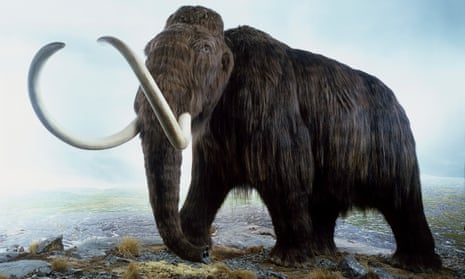Woolly mammoths were in the grip of a mutational meltdown before dying out, scientists have revealed, adding that the last surviving population of the hairy giants might have had silky, soft coats, a poor sense of smell and even heartburn.
Woolly mammoths died out in mainland North America and Siberia about 10,000 years ago owing to a combination of human hunting and a warming climate. However, small populations continued to exist on islands in the Arctic Ocean lying between Russia and Alaska until the creatures finally went extinct about 3,700 years ago.
Now scientists have carried out the most in-depth comparison yet of genomes from ancient mainland woolly mammoths and their more recent island-dwelling relatives, shedding light on their decline.
“In this island mammoth there is an excess of what look like bad mutations right before the mammoths go extinct,” said Rebekah Rogers, co-author of the study from the University of North Carolina.
While Rogers points out that the demise of the beasts is likely to be down to many factors, the accumulation of such mutations could also have played a role. “We don’t know exactly what happened but this certainly did not help them out,” she said.
Published in the journal Plos Genetics, the study describes how Rogers and her colleague Montgomery Slatkin from the University of California, Berkeley, compared the genomes of two woolly mammoths. One lived about 45,000 years ago amid large populations on mainland Siberia, while the other lived about 4,300 years ago on Russia’s Wrangel Island – an isolated population thought to have comprised just 300 beasts.
The results, the authors say, paints a bleak picture, with inefficiencies in natural selection among the small island population resulting in the accumulation of a host of mutations believed to be harmful to the animals’ health – a problem compounded by inbreeding.
What’s more the team reveal that, unlike the older Siberian woolly mammoth, the island mammoth had mutations known, in mice, to result in satin fur. If the mutation had the same effect in mammoths, said Rogers, the beasts of Wrangel Island would have been distinctly sleek, with a shiny coat and translucent hair. “It may have been endangered, its people were going extinct, but it looked really good,” said Rogers.
Unfortunately, luscious locks might not have been a boon, the authors note, pointing to research that suggests the stiff, bulky nature of the outer coat of woolly mammoths would have protected them against the cold.
And there’s more. “A lot of satin mutants are known to have digestive problems, and so it may have had heartburn, it may have had trouble digesting its food,” Rogers said.
The island mammoths also had mutations in genes of the olfactory system, suggesting that they had lost some aspects of their sense of smell. Mutations were also found in genes relating to urinary proteins, chemicals that are known to act as pheromones in mammals including the Indian elephant, influencing social status and mate choice.
As well as shedding light on the fate of the island mammoths, the study highlights important lessons for modern conservation.
“If you do have a population that has been very small for a very long time, just because you bring them back up to the normal population levels that doesn’t necessarily mean that they’re ok,” said Rogers. “You may want to monitor those populations even when it seems like they are healthy to make sure that bad mutations aren’t affecting them.”
Matthew Cobb, professor of zoology at the University of Manchester who was not involved in the study, said that the findings were intriguing. “Assuming that these mammoth smell genes are truly non-functional, this may represent an adaptation to the particular conditions on Wrangel island,” he said. “Olfactory genes evolve very rapidly, and can quickly become non-functional where they no longer serve any function because food sources or predators have changed.” However, he cautions against drawing firm conclusions, noting that similar mutations thought to render genes defunct in other animals have not always had the expected effect.
While there has been much commotion about proposals to bring back the woolly mammoth, Cobb is sceptical that the new study will aid such endeavours. “These findings are not going to help us resurrect the mammoth, which despite recent excitement is not even a distant prospect,” he said.
Instead, Cobb agrees with Rogers that the work could help scientists understand what happens when endangered animals shrink in numbers. “For the mammoths, the end point was extinction; these findings may enable us to develop better conservation strategies for animals that are currently endangered,” he said.

Comments (…)
Sign in or create your Guardian account to join the discussion